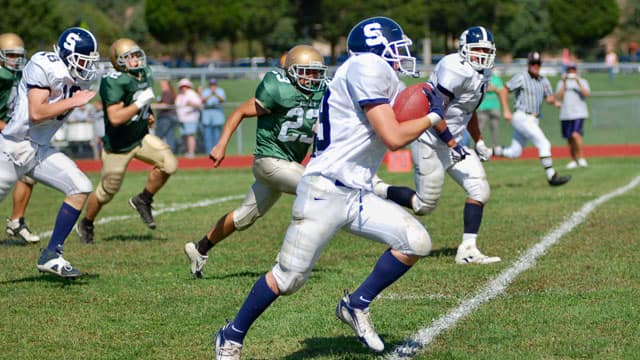Tongue Facts and Functions
Before talking about tongue injuries, it's good to know all the Xs and Os on your tongue. Did you know that your tongue has:
- 8 muscles?
- 3,000-10,000 taste buds?
- Both good and bad bacteria?
- The ability to help you say up to 90 words per minute?
It's true. It's one strong muscle — vital for eating and speaking. The tip of your tongue, or the apex, is kind of like the index finger as it's the point of contact with the rest of your mouth. In comparison, the frenulum is where your tongue and floor of your mouth meet, as well as your lips and gums.
How Injuries Occur
There's the potential for contact with many sports, from football and basketball to soccer and hockey, that can lead to a tongue injury. Usually, that's due to unintentional biting of the tongue. Some bites can cause a sting, while some can be more serious with greater pain and bleeding. If you've experienced a typical mouth cut or wound with bleeding, here's what to do:
- First thing, focus on the bleeding as your tongue has high blood flow.
- Apply pressure to the wound with medical gauze or some other sterile cloth for 15-20 mins
- After the bleeding has died down, use salt water or diluted hydrogen peroxide to rinse and clean the injury.
If treated quickly, there's a good chance you or your child should be able to return to the field, court, or rink.
If It's More Urgent
If it's a more significant injury and a laceration has occurred, you should immediately seek medical attention. Your local ER or walk-in clinic should work. A large gash or laceration could require:
- Sutures
- Stitches
- Antibiotics for infection
- Prescribed pain relief medication
After addressing the bleeding and actual wound, your overall oral health and how your injury could affect it should be considered. As stated earlier, there's a lot of bacteria in your mouth on your tongue. Plus, eating, swallowing, and speaking could be impacted. Make sure you and your doctor discuss all of these before you're discharged.
Injury Prevention
Football has helmets to protect heads. Soccer has shinguards for protecting legs. And to help reduce tongue injuries, mouthguards are the answer. Nearly all contact sports recommend wearing mouthguards for protecting your jaw, tongue, teeth, and mouth. There are three different kinds of mouthguards to choose from.
- Standard
These are your typical one-size-fits-all product, but as we know, every mouth is different.
- Boil-and-bite
This over-the-counter product allows you to boil the mouthguard and then bite into it to create a more unique and secure fit.
- Custom
The most costly option is the best one, but it can only be made by your dentist.
The American Dental Association has found that mouthguards help reduce sports-related dental injuries. It's a simple solution that can be conveniently worn across multiple sports.
Wearing a mouthguard during competition and practice should eliminate nearly all risk of a tongue injury. But a high-powered oral care routine is always in the game plan. So daily flossing, brushing with soft bristles, tongue scraping/cleaning, and regular dental checkups are keys to a winning and thriving oral cavity.
Oral Care Center articles are reviewed by an oral health medical professional. This information is for educational purposes only. This content is not intended to be a substitute for professional medical advice, diagnosis or treatment. Always seek the advice of your dentist, physician or other qualified healthcare provider.
ORAL HEALTH QUIZ
What's behind your smile?
Take our Oral Health assessment to get the most from your oral care routine
ORAL HEALTH QUIZ
What's behind your smile?
Take our Oral Health assessment to get the most from your oral care routine
Join Us
Get the best of your oral health routine and take it to the next level with expert advice, recommendations, products and solutions and special offers.
Join Us
Get the best of your oral health routine and take it to the next level with expert advice, recommendations, products and solutions and special offers.















